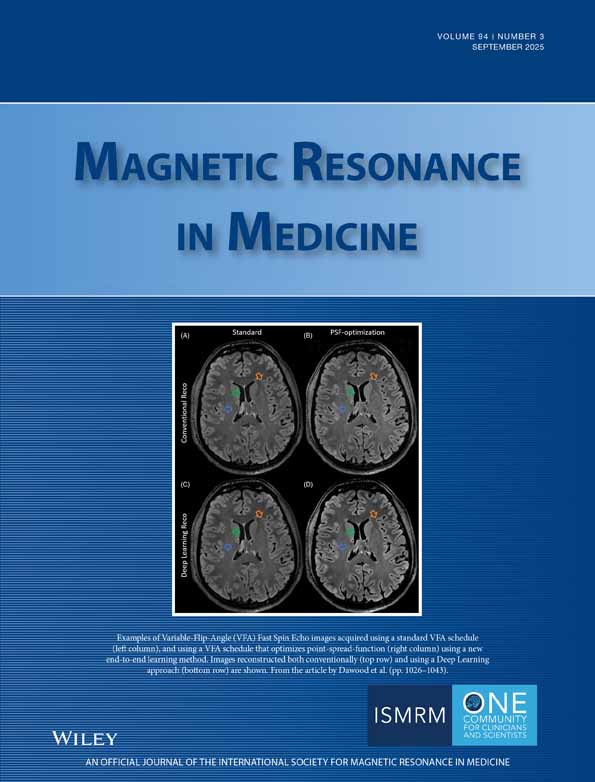Self-supervised denoising diffusion probabilistic models for abdominal DW-MRI
Abstract
Purpose
To improve the quality of abdominal diffusion-weighted MR images (DW-MRI) when acquired using single-repetition (NEX = 1) protocols, and thereby increase apparent diffusion coefficient (ADC) map accuracy and lesion conspicuity at high b-values. We aim to reduce the effect of blurring due to motion that obscures small lesions when averaging multiple repetition images at each b-value, which is the current clinical standard.
Methods
We propose a self-supervised denoising diffusion probabilistic model (ssDDPM) to improve DW-MRI quality given noisy single-repetition acquisitions in pediatric abdominal scans. The ssDDPM is designed for multi-b-value DW-MRI and incorporates diffusion signal decay model (i.e., ADC model) constraints into its loss term. The model is trained to denoise single-repetition images from multiple b-values while ensuring that the output adheres to the signal decay model. Training was performed on a dataset of 120 pediatric subjects with liver tumors. The performance of ssDDPM was compared with non-local means (NLM) filtering and deep image prior (DIP) denoising techniques. These techniques have the capability to denoise single repetition images unlike the other techniques in literature that requires multiple direction or repetition images. Evaluation included qualitative radiologist's image quality assessment, receiver operating characteristic (ROC) analysis for lesion detection, and ADC fitting accuracy compared with motion-free, breath-hold reference data.
Results
The ssDDPM demonstrated superior performance over comparison methods in terms of image quality, lesion conspicuity, and ADC map accuracy in NEX = 1 images. It received higher scores in radiologist assessments and showed better lesion discrimination in ROC analysis. Additionally, ssDDPM provided more precise and accurate ADC estimates when compared with the motion-free, breath-hold reference data.
Conclusion
The ssDDPM effectively reduces motion related deblurring and enhances the quality of DW-MRI images by directly denoising single-repetition (NEX = 1) images while respecting signal decay model constraints. This method improves the assessment of pediatric liver lesions, offering a more accurate and efficient diagnostic tool with reduced scan times, when compared with current clinical practice and other denoising techniques.
Open Research
DATA AVAILABILITY STATEMENT
Our source code is available at: https://github.com/quin-med-harvard-edu/ssDDPM.




